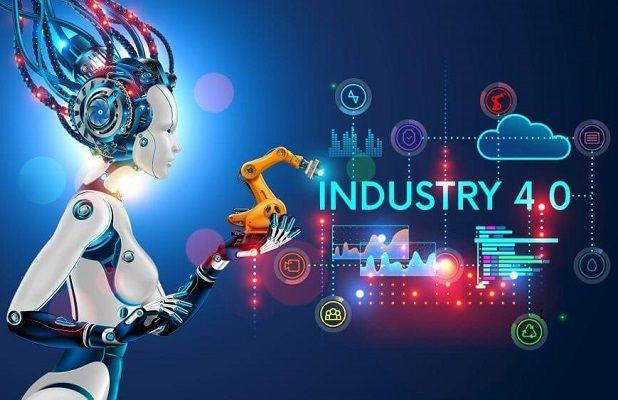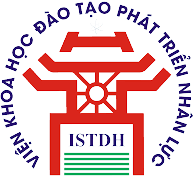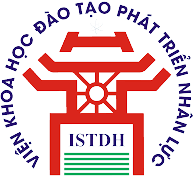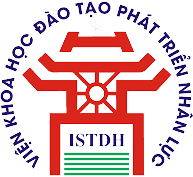No.5, Alley 139, Phu Dien Street, Phu Dien Ward, Bac Tu Liem District, Hanoi

4th Industrial Revolution
Updated:28/08/2023
What is the 4th Industrial Revolution?
Definition of the 4th Industrial Revolution
The 4th Industrial Revolution (4IR) or Industry 4.0 is a way of describing the connection between the modern physical and digital worlds. Industry 4.0 appeared in the early 2000s. However, the name of this term was correctly called in 2016 by Klaus Schwab – Executive CEO of the World Economic Forum (WEF). The 4th is the convergence of modern technology fields, including: biotechnology, IoT (Internet of Things), nanotechnology, digital technology (ADP), 3D printing, artificial intelligence. creating (AI),… Industry 4.0 has become a changing trend of the global social context
Many people believe that the 4th Industrial Revolution is the result of a digital technology storm. They open up a new and transformative path in lifestyle, working and daily communication relationships. Revolution 4.0 has completely broken the old principles in all business fields.
The phrase 'technology 4.0' was first mentioned by the German scientific group during the presentation of a high-tech strategy to the government in 2011. And officially in 2016, the executive chairman of the Economic Forum World Klaus Schwab introduced the concept of 'the 4th industrial revolution' in the global annual meeting. Also sold books explaining the topic in detail the same year.
Origins of the 4th Industrial Revolution
The foundation that formed 4IR is the success of the first three industrial revolutions: the 1st, 2nd and 3rd industrial revolutions.
1st Industrial Revolution: In the 18th century, the introduction of the steam engine led to the 1st Industrial Revolution. This process promoted the possibility of mechanization of manufacturing. Since then, human society has entered the stage of urbanization and modernization. 2nd Industrial Revolution: Electricity and other scientific advances are the "products" of the 2nd Industrial Revolution. 2. The 3rd Industrial Revolution: This revolution took place in the 1960s with the development of computers and digital technology. These are the products that we still enjoy today.
Therefore, the 4th Industrial Revolution is not simply a technological leap forward. This is the formation and crystallization of earlier modern inventions.
Events kicking off the 4th Industrial Revolution
The concept of the 4th Industrial Revolution was first mentioned in the "High-tech Strategic Action Plan" by Prof. Klaus Schwab. He is the chairman of the World Economic Forum Industry 4.0.
Over the past 75 years, the 4th Industrial Revolution has been applied in many important technology areas. In 2011, the concept of Industry 4.0 was first mentioned at the Industrial Fair Hannover (Federal Republic of Germany). Technology 4.0 developed strongly in Germany and spread to other advanced countries such as the US, China, Japan, India.
In 2013, following the development momentum, the keyword "Technology 4.0" continued to emerge through a report of the German government. According to the newspaper, this phrase refers to high-tech strategies that automate production activities without human input.
The concept of Industry 4.0 continued to be exploited at the 46th World Economic Forum (WEF) (Switzerland). Currently, Industry 4.0 is no longer a project under the German framework. This term has become a common theme of many countries and has become an important foundation of modern life now.
Some Inventions of the 4th Industrial Revolution
Industry 4.0 resonates with the explosion of the Internet age, creating great turning points with great inventions. Therefore, businesses in this period were operating in tandem with new technology.
IoT (Internet of Things)
This is the convergence of three factors: the Internet, micro-mechanical devices and wireless devices. IoT creates products related to daily life such as computers, phones, microwave ovens, televisions, etc. They have the ability to communicate information through the Internet.
IoT helps businesses collect customer data based on continuously connected products. So you will be better at assessing customer behavior to adjust your marketing strategy accordingly.
AI (Artificial Intelligence)
Artificial intelligence comes from the field of computer science. This technology creates machines capable of acting and reacting similar to humans. AI is programmed with many goals such as: collecting and processing information, making arguments and judgments, self-correcting errors, etc. In marketing, AI is responsible for analyzing customer data, proposing strategies. reasonable business. In particular, when using AI, personalization is promoted more strongly. This is a common trend that all businesses are aiming for.
Blockchain (Blockchain)
This is considered an efficient and secure method of recording and sharing data. Blockchain is decentralized, transparent and does not depend on 3rd parties. A typical example of a blockchain is Bitcoin – the most widely used digital currency.
In addition, Blockchain is also used for other purposes such as: medical data security, anti-election fraud, supply chain tracking, etc.
Cloud (Cloud Computing)
With cloud computing, users can store, classify and organize data on the service provider's system. Such as: Office 365, Facebook, Youtube, etc. This platform allows businesses to implement automated marketing strategies to optimize resources and save costs.
Big Data (Big Data)
Big Data supports users to collect and store large volumes of data, such as individual customer information. This helps businesses capture the behavior, trends, needs, ..., of consumers. From there, you can set up marketing strategies that are tailored to each customer in different stages.
Biotechnology
The main activity of biotechnology is the analysis and exploitation of cells and biomolecules. These data are then used to develop the technology. They have the ability to serve many purposes such as creating new herbs and items. In addition, biotechnology can open up advanced industrial production processes with cleaner energy sources.
3D printing
This technology allows manufacturers to print products with their own characteristics. Compared to traditional printing methods, 3D printing requires less tools and costs with faster performance. In addition, this process is also supplemented with customizations to create more perfect features.
RPA (Robot Process Automation)
This technology makes AI-powered robots capable of automating simple business tasks. Human activities are replaced by intelligent robots, which take on a number of common roles such as transaction processing, human resource management, marketing support, etc.
Robots
The majority of robots are used in design, manufacturing or for personal and commercial use. Nowadays, robots are becoming more and more complex and sophisticated. They are often present in specialized fields such as: healthcare, manufacturing, services, etc. Industry 4.0 opens up many opportunities and challenges for businesses today. Therefore, every business needs to build railings to keep the innovation process of this revolution on track, creating value and long-term benefits for themselves and the society.
Characteristic
This paradigm shift in Industry 4.0 is based on the following tenets:
Interoperability with things: the interoperability of all elements of the factory, cyber-physical systems, robots, enterprise information systems, intelligent products and people, as well as systems third-party system. Decentralization: the ability to design autonomous sub-processes in the factory with cyber-physical elements with autonomous decision-making capabilities. Real-time analytics: collectability Collecting and analyzing large amounts of data (Big Data) enables monitoring, control and optimization of processes, enabling all the results and decisions that result from the process immediately and at all times. point.Virtualization: the ability to create a virtual replica by data collection and modeling of industrial (physical) processes, obtaining virtual factory models and simulation models. Translation-oriented service: the ability to deliver newly created value to customers in the form of new or improved services with the exploitation of new disruptive business models. Modularity and scalability: flexibility and scalability elastic to adapt to industry and business needs at all times, with the ability to expand the technical capacity of the system to the specification required by the evolution of business needs in each field fit.
Frequently asked questions about the 4th Industrial Revolution
How is Industry 4.0 different from previous revolutions?
Industry 4.0 ushers in a new way of shaping the way people work. Hardware, software, and connected devices are reconfigured. They integrate features to create more lasting value than before, such as: collecting and analyzing large volumes of data, increasing interaction between smart devices, bridging the gap between the physical world With modern digital technology,…
How to ensure 4.0 technology benefits every business?
To ensure benefits in the Industry 4.0 revolution, businesses need to proactively shape and anticipate the explosion of technology. Catching up with new technology trends, increasing customer experience or overcoming security, etc., are solutions to help businesses succeed in this period. Proving to consumers the value and meaning of your business is inevitable.
How does technology 4.0 develop in real life?
Currently, technology 4.0 has contributed to many different fields and industries. They create their own values and benefits through great inventions such as:
– Robotic technology automates the sewing process
– Reception software for hotels, restaurants, agencies, call centers, …
- The generation of driverless cars joins the field of traffic
– IBM Watson machine known as the “know-it-all doctor”
– Virtual reality technology is applied in the field of teaching
– IoT technology with sensor systems and sensors (measurements)
What are the benefits and limitations?
Benefit
Industry 4.0 is making it easier for companies to collaborate and share data among customers, manufacturers, suppliers, and other parties in the supply chain. It improves productivity and competitiveness, enables the transition to a digital economy, and provides the opportunity to achieve sustainable and economic growth.
In the environment of Industry 4.0, all supply chain parties share data from their production sites, vehicles, warehouses and databases in real time. Real time POS (Point of Sale) and inventory data are updated continuously for users to understand the business situation. Customer's urgent orders can be updated in time and meet customer satisfaction. The status and location of the product can be tracked and controlled. Product quality is better controlled and inventory is better managed. Equipment settings are self-adjusting based on materials used, products manufactured, and other environmental conditions. Mass production products are customized according to the needs of each customer. Equipment can be monitored remotely and malfunctions can be accurately predicted. Whatever the type of business, technology can connect customers, suppliers, partners, production equipment and products. products throughout the life cycle of products and services.
Industry 4.0 enhances global competitiveness through cooperation and alliances of companies. It can be seen that in the future products will no longer be built by a worker but by a robot or programmer. The benefits that Industry 4.0 brings to businesses are specifically summarized as follows:
Increase productivity and revenue: With increased efficiency, reduced operating costs lead to increased sales and profits. This also drives productivity improvements. Industry 4.0 is one of the main drivers of increasing revenue and GDP growth of countries.
Optimizing the production process:
Smart factories are all connected so a network connecting smart factories, smart products and other smart production systems is essential. Electronic physical manufacturing systems enable factories and manufacturing facilities to respond quickly and properly to changes in customer demand levels, stock levels, machine failures and delays unforeseeable. Smart marketing, smart logistics and intimate customer service are also important throughout the value chain. The integration facilitates the establishment and maintenance of value-creating and adding networks. It can also mean the integration of new business models across countries and even across continents, creating a global network.
Accelerated technology development:
Industry 4.0 provides a platform for further innovation with evolving technologies. Production and service systems can be further developed. For example, with mobile phone applications, more and more developers are using open APIs to combine applications and consider technologies that will be an improvement on GPS, RFID, NFC and even accelerometer sensor embedded in standard smartphone.
Better customer service: Industry 4.0 can track customer feedback in real time to provide better service and customer experiences.
Limit
With the three previous revolutions humanity has experienced, tremendous social changes have taken place through each revolution. The process of urbanization and industrialization has taken place in a spectacular way and people may not be able to foresee the social problems and impacts on society in the coming future.
Cybersecurity and privacy are key concerns. As all data is digitized and transferred to computers, IoT devices are vulnerable and sometimes these threats can be catastrophic when they have important security data stolen. strategic location.Skills and education of workers working in industry 4.0-based processes need to be improved. Under the remarkable change of science and technology, people also have to constantly change and update to be able to catch up and integrate into the times. Machines have their own limitations. Excessive dependence on technological equipment and machinery can cause businesses to suffer serious damage, moreover, businesses must carefully consider finance because of the costs of moving and changing machines. would be huge.
In a nutshell, Industry 4.0 enables digitally integrated and intelligent value chains that offer virtually limitless possibilities. Industry 4.0 solutions dramatically improve operational efficiency, productivity, product quality, inventory management, asset utilization, time to market, agility, workplace safety and durability environmental sustainability.
Opportunities and challenges that the 4th industrial revolution brings
With the great inventions of mankind, the 4th industrial revolution contains many development opportunities for businesses, in all fields. In which, some of the professions that inherit the greatest benefits are:
Software technology: more and more software and applications are prioritized by people to make life more convenient, work, daily activities (food ordering apps, e-wallets...) Industry: optimal Process, optimized efficiency, automation to save resources are outstanding opportunities for factories participating in the digital transformation race. Agriculture: predicting crop quality, controlling crops, improving High productivity with as little effort as possible are the positive results that the 4.0 revolution brings to this field. Healthcare: creating a competitive advantage thanks to state-of-the-art equipment, robots that help perform surgery Successfully manage project records…
Along with the opportunities come great challenges for society. The benefits of human-assisted robots are somewhat being abused, creating the risk of completely replacing humans in some jobs. Thereby, limiting opportunities for employees to contribute, contributing to the high unemployment rate.
Not only disrupting the labor market, this replacement can also cause dissatisfaction among employees when they do not feel recognized. This situation is prolonged and widespread, especially in countries with a highly competitive culture, which will form the crowd effect, causing negative and negative effects globally. For example, the situation of 'stop trying' in positions 'easily displaced' by technology. To cope with the adverse effects from the integration of technology into operation and production, a common way that many leaders are applying is training, improving technology for employees, developing qualifications to self- technology mastery. Some companies even open opportunities for key employees to own shares, making them feel secure about their position in the organization.
In the future, the 4.0 era will bring many other challenges to businesses. This requires leaders to constantly learn.
Reference links: https://en.wikipedia.org/wiki/C%C3%A1ch_m%E1%BA%A1ng_C%C3%B4ng_nghi%E1%BB%87p_l%E1%BA%A7n_th%E1%BB%A9_t%C6%B0
https://tino.org/en/cach-mang-cong-nghiep-lan-thu-4-la-gi/
Active News
There are no posts
Science News
There are no posts

Institute of Science Training Human Development
Certificate of registration of Science and Technology activities No. A-1247
No.5, Alley 139, Phu Dien Street, Phu Dien Ward, Bac Tu Liem District, Hanoi
+84 2463.289.555
[email protected]
Link Website
Connect
Visitors Count
Total:
0Today:
0Online:
0
